Choosing a daily card for contemplation is part of the Alternative Tarot Course. I decided that I would try to post my reflections, but would do it in a weekly post instead of daily. With the exception of the last entry, these are transcriptions of my written tarot journal. Each morning I draw a card at random from the Wild Unknown deck, and then draw the corresponding card from the Smith-Waite deck. I write down the keywords from various sources I have (listed at the end) and then go from there. Many of the references will make sense only to me. It’s very different from my usual bloggy voice–with the exception of the last entry.
Sunday, April 26th: The Eight of Cups (and Special Guest 6 of Swords)
What is there that needs to be left behind?
Smith-Waite: Dark, chalky sky & sympathetic moon. The sound of night waters (the Blue Estuaries.) There’s a nice beach in the foreground, blocked by the cups, but it’s bland. Green craggy hills, almost nothing in the horizon. I look at the moon and she looks back: Go.
Wild Unknown: Dark sky, no moon, mountain shadow. The cups in the foreground are broken, some barely recognizable. Going is frightening–the terrain is daunting and absolutely unknowable–but there is nothing left here. You must go.
Two sides, then: what is being left, & what is the wanderer seeking?
This reminds me of Housekeeping.
What does it mean for me today? Letting go of cows, as Thich Nhat Hanh would put it. What are things I think I need? What would happen if I let go? The thing is–from this side letting go looks like sorrow. There is no horizon or hope, but go we must.
[I then drew another card to go with this one for a poem. The Six of Swords.]
First impression: something about Bodhisattvas wandering.
Bodhisattva Compassion Estuary
I left my home in the first new moon
and Wandered in tears.
At that time I had eight legs,
but now I have two and carry a staff.
Listening to quiet night waters in the moonlight
mix silt and tide, silt and tide.
April 27th, Monday–Daughter/Page of Pentacles
“Responsible, kind”–Krans
“Application, study, scholarship, reflection”–Waite
I say: earthy, studious, dreaming.
In some ways, I’ve long felt that this card is the court card that represents me. Altho I am passing out of youth, it combines studiousness with dreaming, visions with practicality. Freshness with clear seeing.
Moon Parasol.
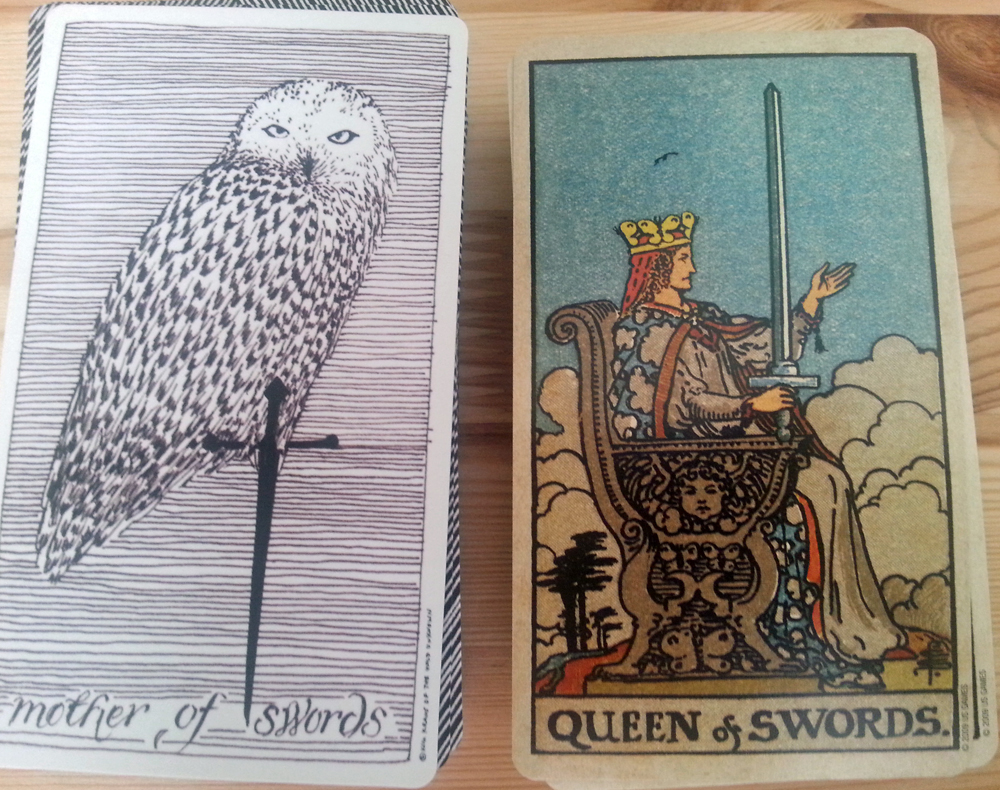 April 28th, Tuesday–Mother of Swords
April 28th, Tuesday–Mother of Swords
Krans says: Experienced, all-seeing
Quinn says: Discernment
It’s no wonder that meanings for this card have changed since Wait’s day. In this text, she is not a figure of power and represents “widowhood, female sadness and embarrassment, absence, sterility, mourning, privations, separation.”
On one hand, the female sadness & embarrassment have go tot go. What Waite means by that is unclear. It’s also unnecessary. Maybe it’s because I resist my own Queen of Swords qualities that I wand to return to the notion that this card is, at least in part, a card of sadness.
To me, the sadness has a tempering effect on the intellect. The best writing I do is an act of mourning.
April 29th, Wednesday–Five of Pentacles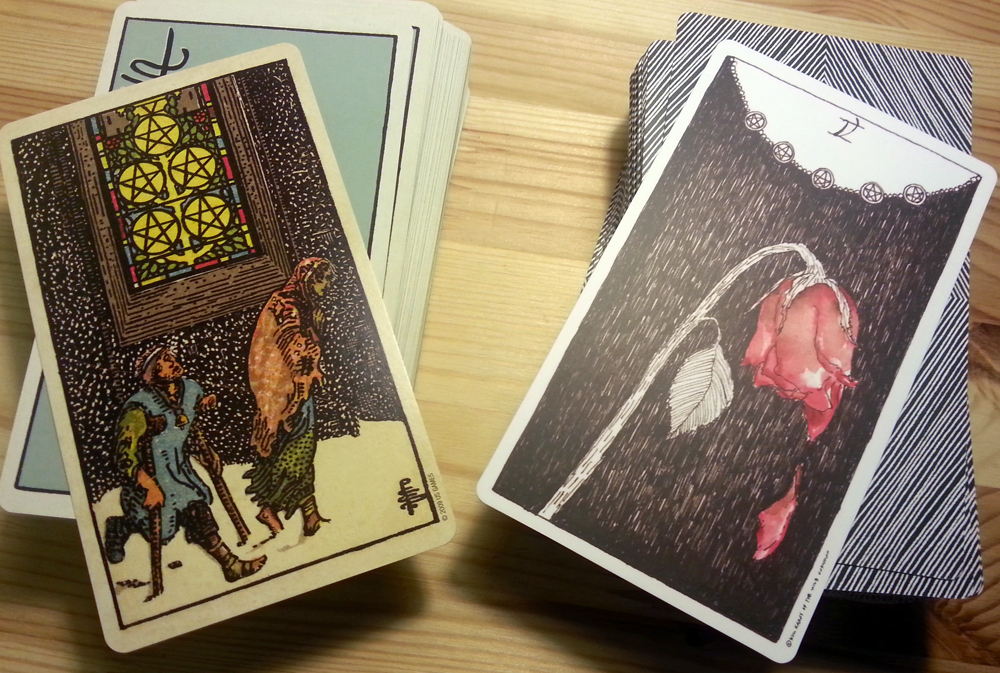
O Rose, thou art sick!
A necklace of pentacles, pretty much. Above, it’s all white, below it’s all black w/ the rose. Similar to the WS design of the Pentacles in the window over the mendicants.
I fear this card, but also take its spiritual message to heart–having strong faith or practice is what helps us through hard times.
“sadness, illness”–Krans
“Hardship”–Quinn
“material trouble”–Waite
I think of the mendicant tradition, maybe Makashyapa or Ryokan.
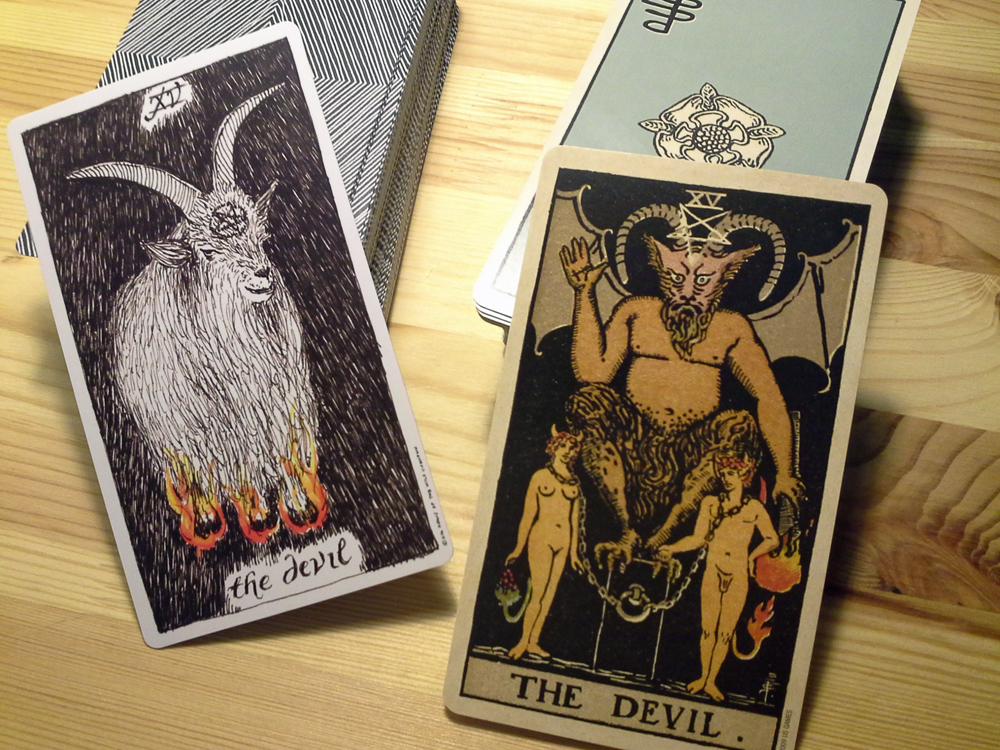 Thursday, April 30th: The Devil
Thursday, April 30th: The Devil
I laugh almost every time I draw this card. I like him, in spite of myself.
“negativity, materialism, addiction”–Krans
“Rage, violence, vehemence, extraordinary efforts, force, fatality”–Waite
“Restriction, fear, shadow”–Quinn
“Bondage, temptation, seduction”–Wen
In Buddhist terms, I would say the Three Poisons: craving/clinging, hatred/aversion, and ignorance.
In a sense, I see the Devil as dukkha–the suffering the Buddha describes in the 4 Noble Truths. When I look at those keywords, I don’t see one thing I like. In fact, I see my life’s work as undoing all these things.
Then why do I laugh when I get this card? Why do I like it when it pops up? I think of the story about the Buddha inviting Mara in for tea. I want to sit down and have a chat with the Devil when he shows up, not reject him. It could be nervous laughter, but it doesn’t feel that way. It feels like, oh, here he is, the Devil shows up in me despite my best efforts to be a perfect spiritual, pacifist person. Hi!!!
“activity in undertaking…great haste, great hope”–Waite
“Movement”–Quinn
“action, vigor, alacrity, acceleration”–Wen
“news, change, action”–Krans
This is the only card in the RWS deck that I would consider semi-illustrated. Movement (for Waite, the wands are near their destination) is happening but things are still in the air. In the Wild Unknown, one of the wands is channeling the fire energy toward the others.
While I think this card is useful, I don’t feel much of an emotional connection with it. Perhaps because it’s not that emotional of a card!
“illusion, deception”–Krans
“temptation, superficiality, enticement, decoys”–Wen
“entrancement”–Quinn
“fairy favours, images of reflection, sentiment, imagination, things seen in the glass of contemplation”–Waite
I did not have time to write in my journal about this one because I have a Saturday morning cooking class that I needed to get to. But it actually turned out to be a 7 of Cups kind of day, because our class consisted of visiting various ethnic grocery stores around town in order to familiarize ourselves with new ingredients and branch out into new cuisines. For me, these places are always full of the enticing and unknown, and since the goods are usually cheap, the temptation to purchase things impulsively is very strong!
In the Wild Unknown tarot, Krans has literally drawn an optical illusion into the card to get the point across. Depending on how you look at it, the upright cup could be sitting on top of a pyramid, or at the starting point of a hollowed out trench in the ground. The other upside down cups signify that the choice is actually empty, and if you choose the upright cup you could very well end up in the trench. In the Waite-Smith card, the darkened person in the foreground is given a dazzling (if bizarre) array of things to choose from. In Holistic Tarot, Benebell Wen says that each thing is a specific symbol, but for me it’s enough to say that none of these things looks substantial.
I find it interesting that in the three more modern sources clearly draw their interpretations from Smith’s drawing–focusing on illusion, enticement, and all the bad things that can come from it. Waite, on the other hand, discusses this card in far more neutral terms, citing it–like other sevens–as a card of contemplation. (Although what “fairy favours” are I can’t say–googling it only turns up wedding favors.)
Sources:
Krans, Kim. [“Little White Book”] The Wild Unknown Tarot.
Quinn, Paul. Tarot for Life. Quest Books.
Waite, A.E. A Pictorial Key to the Tarot.
Wen, Benebell. Holistic Tarot. North Atlantic Books.
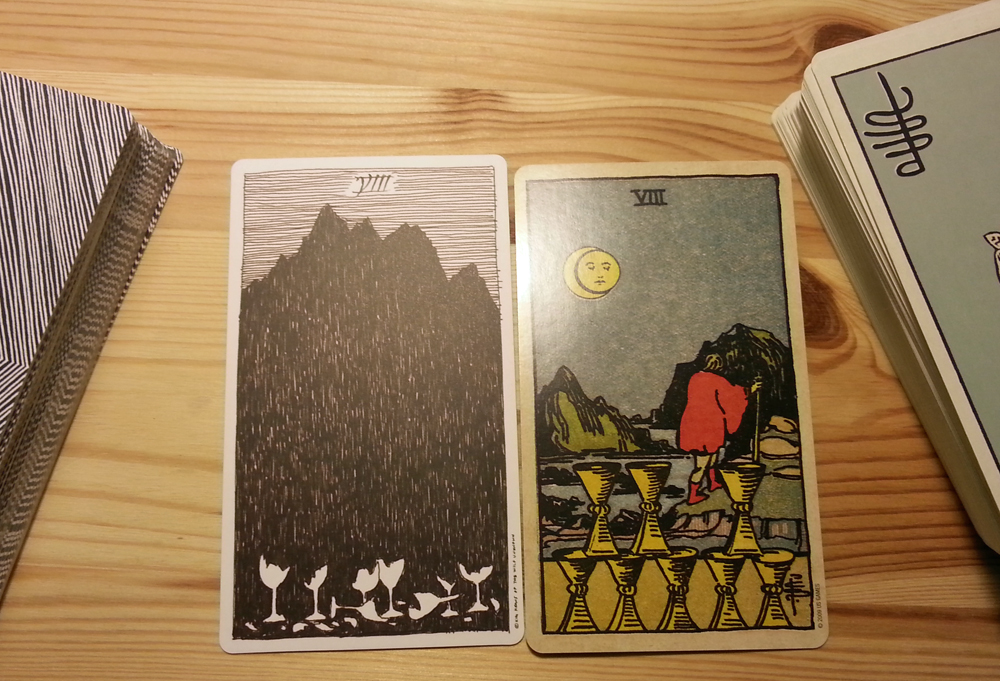
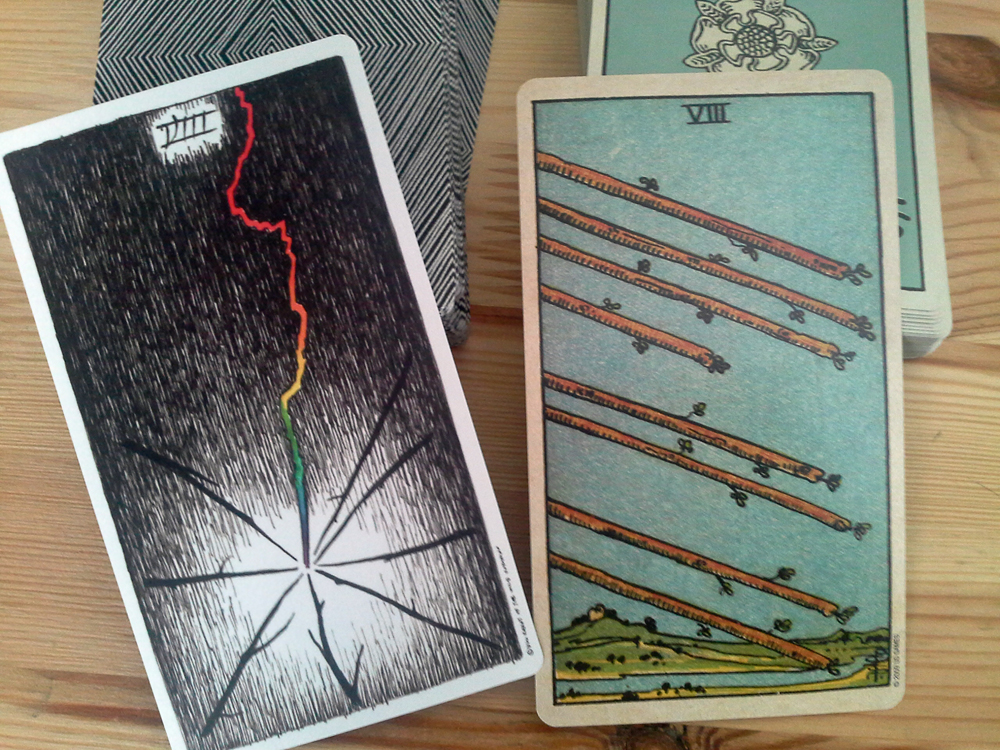

Leave a Reply